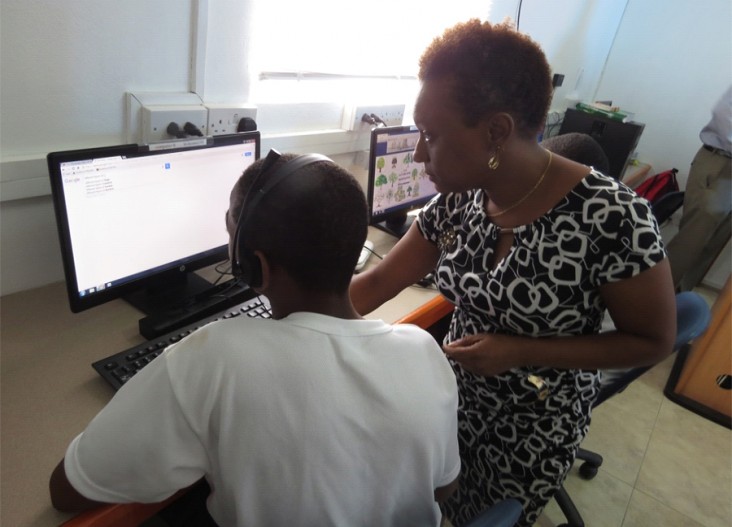
For Immediate Release
At-risk youth are more successfully reintegrating into society and the OECS region’s juvenile justice landscape is transforming as a result of a U.S. Government supported program implemented by the United States Agency for International Development (USAID). United States Government (USG) officials, their St. Lucian counterparts, and other partners recently met to close out activities in St. Lucia and celebrate the four-year US $5.8 million Juvenile Justice Reform Project’s (JJRP) successes.
The atmosphere at the Boys Training Centre (BTC) in St. Lucia was festive as project partners and well-wishers were treated to musical renditions from young beneficiaries whose newly-acquired skills highlighted the broad-based impact of the project. In St. Lucia, US $800,000 was invested to support reform efforts at the BTC, the Upton Garden Girls Home, and to train juvenile justice officials in modern approaches to handling troubled youth and those in conflict with the law. At the BTC, youth also benefitted from vocational training and computer-based education programs expected to support their reintegration.
Describing the project achievements as “significant and far-reaching,” USAID Mission Director, Christopher Cushing, stated: “As we close this activity, we are extremely proud of the collaboration between the USG, the OECS Commission, and our various national and local partners because of the investment in one of the region’s most valuable assets – its youth.”
While commending the project team for achieving significant milestones, including the rehabilitation of the BTC and the introduction of improved juvenile management methods that focus on rehabilitative and restorative justice, Mr. Cushing lauded the fact that juvenile offenders were no longer being housed in the same facilities as adult offenders.
“Through the USG supported JJRP, the region as a whole is making significant strides in steering youth away from adult facility detention. For example, the New Horizons Centre opened in St. Kitts & Nevis three years ago; St. Vincent and the Grenadines will be reopening the upgraded Liberty Lodge Boys Home; and Grenada’s new Bacolet Youth Facility is opening next month. The Boys Training Centre here has been at the forefront of developing its ability to manage and treat youth,” he emphasized.
Senior Counsellor at the BTC, Patrick Fearol, said while there was still a long way to go, the institution had achieved much success as a result of the JJRP. In addition to demonstrating significant behavioral change, many St. Lucian youth channeled their energy into football and music with a few excelling on both the national and regional stages. One young steel pannist, who plays with the BTC band as well as on the hotel circuit with Pan Times Steel Orchestra, proudly represented the country at Trinidad and Tobago’s annual Carnival Panorama competition.
St. Lucia’s Minister of Social Transformation, Harold Dalsan, also praised the JJRP: “St. Lucia is indeed grateful to be a beneficiary of reform to our juvenile justice system, including those related to balanced and restorative justice, alternative care and diversion, child welfare and adolescent development, mental health, and drug and alcohol treatment.”
Similar close out activities are being planned for the other OECS participating countries.







Comment
Make a general inquiry or suggest an improvement.